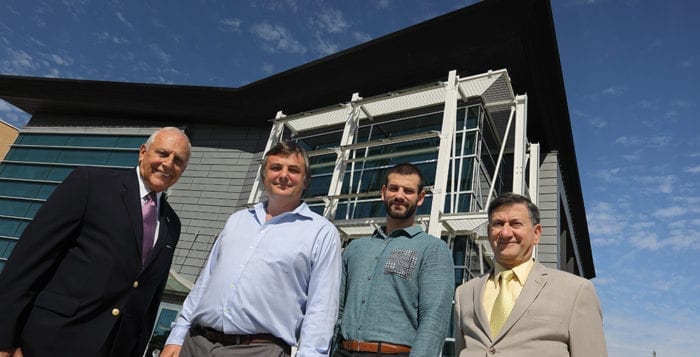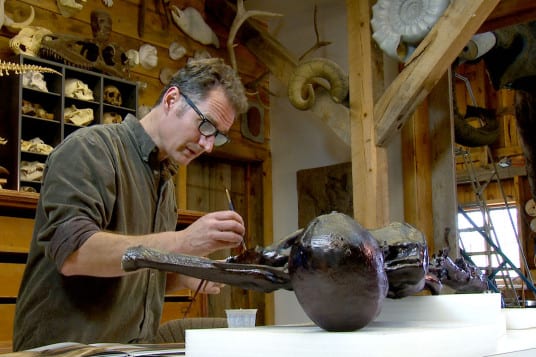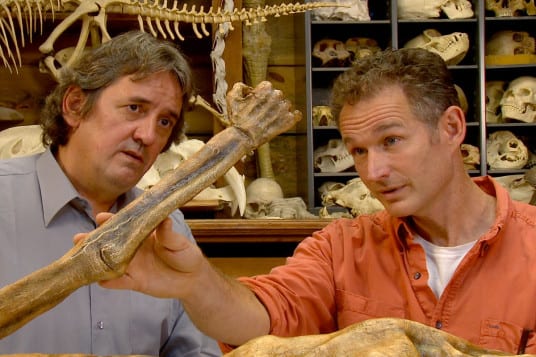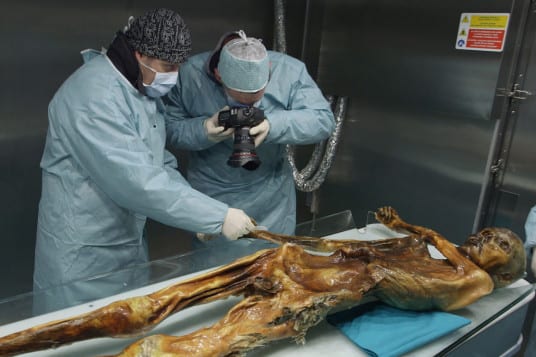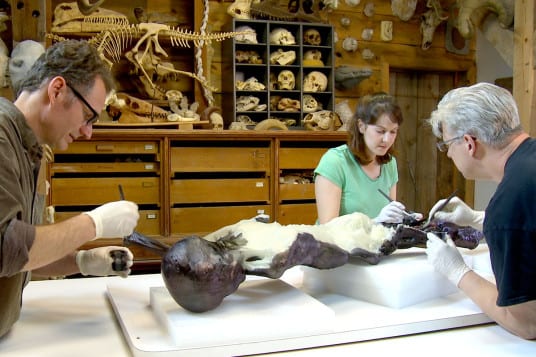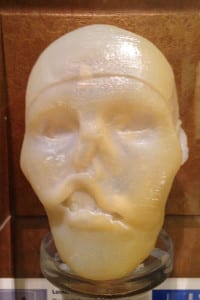By Daniel Dunaief
It’s lighter, cheaper and just as strong. In the age of manufacturing the latest and greatest high-technology parts, that is a compelling combination. Indeed, the Department of Energy recently awarded the Brookhaven Technology Group, a business incubator tenant of the Advanced Energy Research and Technology Center at Stony Brook University, $1.15 million to develop a high-temperature superconductor cable with a new architecture. The grant supports the research of Vyacheslav Solovyov, an adjunct professor in the Department of Electrical Engineering at SBU and the principal investigator at Brookhaven Technology Group.
“Very few projects are funded, so we’re very excited that ours was chosen,” said Paul Farrell, the president at BTG. The potential applications for Solovyov’s Exocable, as the new architecture is called, span a wide range of uses, including in high field magnets for a new breed of accelerator. The work entails creating a high-temperature superconducting cable that is an integral ingredient in creating the superconducting machinery. The BTG process produces a high-temperature superconducting cable after removing the substrate, which is a single-crystal-like material. Solovyov transfers the superconducting layer to a supporting tape that can be engineered for strength and not for crystallinity.
This work reduces the weight of the tape by as much as 70 percent per unit length for the same current capacity. The potential for this new cable is that it can contribute to the growing field of research at Stony Brook and Brookhaven National Laboratory on superconductivity, said Jim Smith, assistant vice president of economic development at Stony Brook. “Maybe this is the next industry that replaces the Grummans and the aerospaces that have left,” he said. Semiconductors are of particular interest to manufacturers because they transmit energy with no resistance. Right now, about 6.5 percent of energy transmitted around the United States is lost in distribution wires, Smith said. Maintaining the energy that’s lost in the wires would have “tremendous benefits.”
To be sure, while the research at BTG could contribute to lower cost and improved efficiency in high-temperature superconductivity, there are hurdles to making this process and the applications of it work. For starters, the company needs to produce kilometers of ExoCable. “The challenge is to demonstrate that the properties will be as uniform as they were before the substrate removal,” explained Solovyov, who has been working in superconductivity since 1986.
Recently, Smith said he, Farrell and Solovyov met to discuss the wiring for their facility. “A lot of power and wiring will be installed in the next four to five weeks,” Smith said. Scientists who worked with Solovyov expressed admiration for his work and optimism about his results. Solovyov’s “new activity will definitely advance the long-promised practical application of superconductivity electrical power transmission, as well as in the development of high-field magnets for both industrial and scientific application,” David Welch, a former collaborator and retired senior materials scientist at Brookhaven National Laboratory, wrote in an email. Welch explained that Solovyov focused on methods for making composites of superconducting material with normally conducting metals in the form of wires, tapes and cables necessary for their practical application. “Such a combination of talents is unusual,” Welch continued. Early on, it was clear “that [Solovyov] was going to become an important member of the scientific staff at BNL.”
Solovyov started working on this process with BTG about a year and a half ago. When he first started collaborating with BTG, the company was working on a superconducting project funded by the army. When that work ended, Solovyov and BTG worked together to submit new proposals to the DOE. According to Solovyov, Stony Brook has been “very helpful in terms of providing facilities and lab space.” Stony Brook’s goal, Smith said, is to help companies like BTG succeed and measures that success in the number of new jobs created in the energy field.
Solovyov, who grew up in the Ukraine, said he has had several breakthroughs in his career. He helped develop a patented technology that can speed up the processing of superconducting materials by a factor of 10. “That has been used in production and I’m very proud of it,” Solovyov said. The professor lives in Rocky Point with his wife Olena Rybak and their two children, Natasha, 19, who attends Suffolk County Community College, and Dennis, 14, who is in high school. Solovyov said he enjoys Long Island, where he can fish for striped bass and bluefish. He pan fries what he catches.
As for his work, Solovyov has four patents and applications for three more. He and Farrell said the company is looking for opportunities for expansion. He is exploring ways to work with large-scale generators and wind turbines. Farrell explained that BTG has ambitions to become a larger company. BTG would “like to become a major contributor in this field,” Farrell said. That could include adding staff and developing more products that can be sold and used worldwide. “If our product is successful, in the sense that it improves the capability of superconductors to be used commercially, we’ll be adding people.” This work will need more funding, which the company plans to get either from the Department of Energy, from private investors or both.
“If you can improve the usefulness of superconductors and reduce the cost of the wire, there’ll be wider use than there is right now,” Farrell said.

